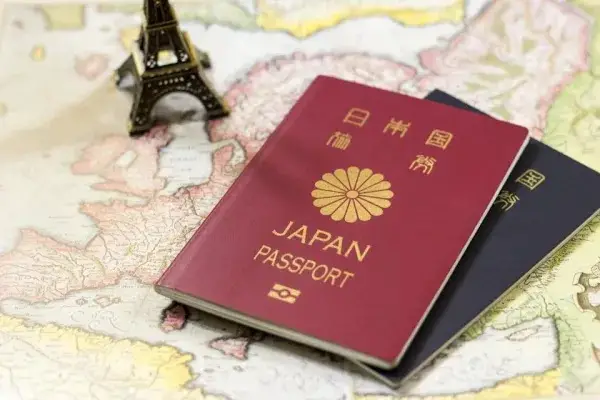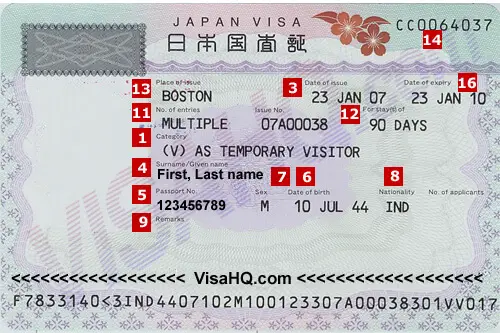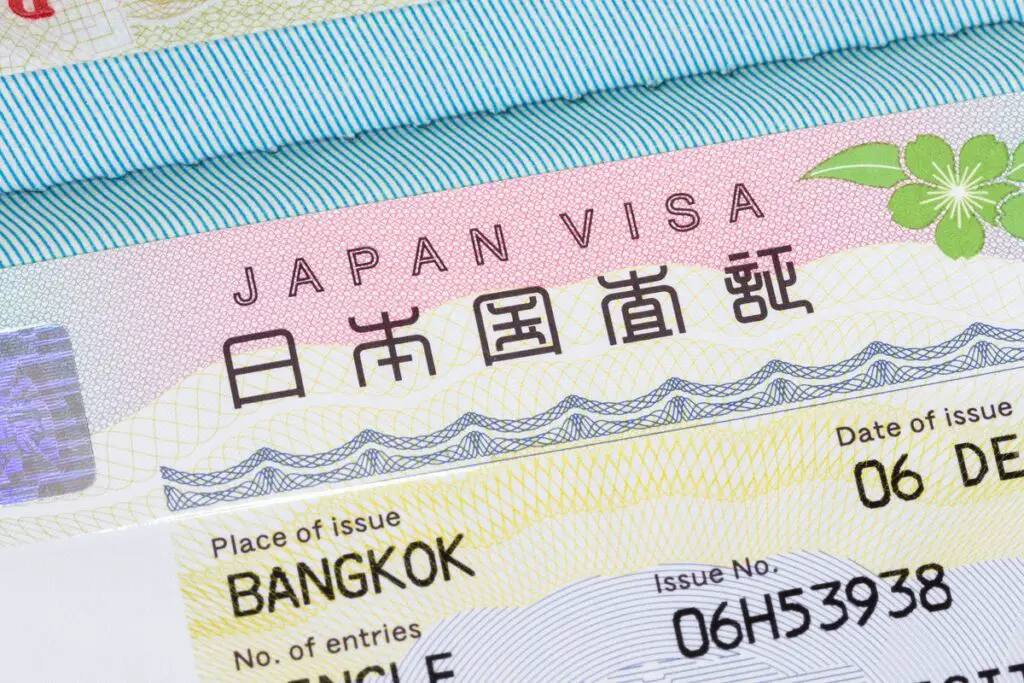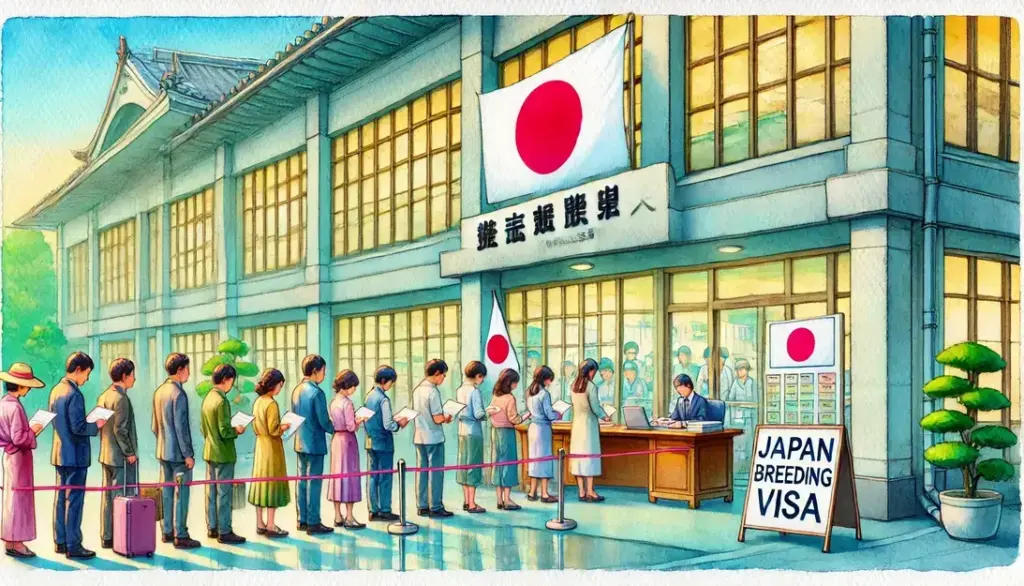Japan’s immigration policies have sparked a lot of talk lately, especially around the so-called “Japan Breeding Visa.” But let’s clear this up immediately—there’s no such thing. It’s a myth that gained traction online. What’s real is Japan’s effort to address its demographic challenges by revising visa programs to attract foreign workers. With an aging population and declining birth rates, the country faces labor shortages across multiple industries. This blog will unpack the rumors, facts, and what Japan’s immigration policies mean for people looking to build a future there. Stay tuned as we set the record straight.
What is the Japan Breeding Visa?
The “Japan Breeding Visa” is nothing more than an internet myth. It started as a joke and quickly spiraled into something much bigger. Though entirely fictional, this rumor has raised questions about Japan’s immigration policies and societal challenges.

Origin of the Breeding Visa Rumor
The rumor about the “Japan Breeding Visa” began with an April Fool’s prank in 2018. SoraNews24, a satirical website, published a humorous article claiming that the Japanese government would offer special visas to foreigners for the purpose of “population growth.” According to the fictitious story, these visas were meant to combat Japan’s declining birth rates by allowing foreigners to participate in “breeding” programs.

The prank, while intended for laughs, took a life of its own as the internet latched onto it. Social media discussions, misinterpretations, and reposts amplified the story. Even today, some people still stumble upon the article or hear about the topic from viral posts, assuming it to be true. It’s a case of satire being misunderstood—and spreading like wildfire. Read more about the hoax here.
Why the Rumor Persists
You might wonder, how does such an absurd rumor gain traction and stick around? Japan’s very real demographic issues make this idea seem plausible to some. The country has one of the fastest-aging populations in the world and a remarkably low fertility rate—hovering around 1.26 births per woman in 2022, far below the replacement rate of 2.1. Learn more about Japan’s low fertility rate here.
On top of this, the Japanese government has been adjusting immigration policies to attract more foreign talent, particularly to address labor shortages in healthcare, construction, and other industries. These real policies might, for some, blur the lines between fact and fiction. However, despite the challenges, Japan is not (and likely never will be) granting visas on the basis of “breeding.” Explore more about Japan’s demographic challenges here.
The persistence of this rumor highlights how a small mix of humor, societal issues, and misinformation can create big narratives online. Have you come across posts about this “visa”? Let’s debunk it together!
Japan’s Actual Immigration Policies
Japan is reshaping its immigration policies to tackle demographic and labor challenges. These programs are opening up pathways for foreign nationals in various capacities. Here’s a breakdown of some key visa policies, including how they work and who qualifies.

Designated Activities Visa (Future Creation)
The Designated Activities Visa, often referred to as the “Future Creation” visa, primarily supports foreign students and professionals in Japan. This visa allows qualified individuals to stay in Japan for job hunting or entrepreneurship.
To qualify, you’ll need to meet specific conditions:
- Be a graduate of an accredited Japanese university.
- Hold specific credentials recognized by the government.
This visa’s biggest perk? It grants you time to explore career opportunities or launch new ventures without the immediate pressure of securing employment. If you’re considering starting a business, you’ll find this framework supportive. Learn more about the Future Creation visa requirements and benefits.
Expanded Foreign Worker Visa Programs
To address workforce shortages, Japan has widened its visa options for foreign workers under initiatives like the Specified Skilled Worker (SSW) program. These changes target industries critically short of workers, including:
- Agriculture: Seasonal work supporting food production systems.
- Construction: Skilled labor roles to sustain infrastructure projects.
- Elder Care: Supporting the nation’s growing elderly population.
Employers benefit, too, by accessing foreign talent to fill skill gaps. Whether you’re proficient in agriculture or healthcare, opportunities under this program continue to expand. Curious about working in these fields? Find more information on foreign worker programs in Japan.

Spouses and Family Members Eligibility
Japan recognizes the importance of family stability for foreign workers. Certain visa types allow for dependents, such as spouses and children, to join primary applicants.
Here’s what’s needed for eligibility:
- The primary visa holder must prove financial capacity to support dependents.
- Individual Certificates of Eligibility (COE) required per family member.
These policies ensure that families can live together while complying with immigration laws. Want to learn more about dependent visa procedures? Check out the Japanese family visa guide.
Japan’s evolving immigration policies show a willingness to adapt while maintaining a structured framework. These updates open doors for more people to consider Japan as a long-term option for work and family life. If you’re thinking of relocating, exploring these visa types is a great start!
Japan’s Demographic Challenges
Demographic changes in Japan are reshaping the country’s economy, workforce, and social structures. As one of the most rapidly aging nations globally, Japan faces hurdles that require innovative solutions. The aging population, declining fertility rates, and growing reliance on foreign labor contribute to an increasingly complex societal puzzle.
Aging Population: The 30% Above 65 Years
In recent years, Japan has seen a dramatic rise in its aging population. Over 30% of its citizens are now aged 65 or older, making it one of the oldest populations in the world. This demographic trend is putting immense pressure on the nation’s economy and social systems.
The increasing number of retirees means fewer active contributors to the economy and more individuals relying on pensions and healthcare. Healthcare costs are soaring, while labor shortages are impacting industries ranging from manufacturing to healthcare. How does a society sustain itself when a significant chunk of its population is no longer in the workforce? Japan is navigating this question every day.
Not only does this impact the nation’s economy, but it also affects societal structures. Families often find themselves stretched thin, balancing caregiving responsibilities and full-time jobs. Public programs aimed at addressing this crisis remain a focal point, but the scale of the issue is unprecedented. Learn more about the fallout from Japan’s aging population.
Low Fertility Rates and Workforce Shortages
Japan’s fertility rate has hovered around 1.2 children per woman—far below the replacement level of 2.1. This long-term trend is contributing to a shrinking population, creating a domino effect on the workforce, social security, and economic growth.
As birth rates decline, fewer young people enter the labor market, leading to acute workforce shortages. This impacts not just productivity but also innovation—a smaller pool of workers translates into lower creative and economic potential. Employers in industries like technology, caregiving, and retail have increasingly voiced concerns about finding enough talent to meet demand.
Why the low fertility? Many cite economic and social factors. High costs of living, demanding work cultures, and limited childcare options make starting or expanding families daunting. Without significant policy changes, reversing this trend remains a challenge. Read about why Japan struggles with low fertility rates.
Dependence on Foreign Labor
To address its labor shortages, Japan has turned to foreign workers, particularly from countries like Vietnam, China, and the Philippines. Programs such as the “Specified Skilled Worker” visa aim to attract skilled talent to industries like construction, elder care, and agriculture. Government data reveals that approximately 65% of Japanese companies are already employing foreign workers to fill critical gaps.
However, reliance on foreign labor is not without challenges. Language barriers, social integration, and policy limitations often make it difficult for foreign workers to build long-term lives in Japan. The rising need for this workforce hints at a broader necessity for streamlined and inclusive immigration policies. Discover more about Japan’s increasing reliance on foreign workers.
While foreign labor plugs immediate workforce gaps, it is not a sustainable long-term solution. Japan must innovate to address its population conundrum, balancing domestic and international strategies. These shifts in demographics reveal an urgent need for proactive, forward-thinking strategies across the board.
How to Apply for a Japanese Work Visa
Securing a Japanese work visa is the crucial step in making your move to Japan a reality. The process might seem daunting, but with a clear plan and the right documents, it becomes manageable. Let’s break it down into steps.
Required Documents and Eligibility
To get started, ensuring you have all required documentation is essential. Missing even one item can cause unnecessary delays in processing. Here’s what you’ll need:
- Certificate of Eligibility (COE): This document is issued by the Immigration Services Agency of Japan. Your prospective employer typically arranges it, proving you meet the qualifications for the specific visa category.
- Passport: A valid passport is non-negotiable, so make sure it’s not about to expire during the visa process.
- Visa Application Form: This form needs to be filled out and signed.
- Photo: Include a recent passport-sized photograph, typically 4cm x 3cm, taken within the past six months.
- Supporting Documents from Employer: These may include:
- A copy of your employment contract.
- Job description to match the visa type.
- Financial proof that the employer can cover costs, if needed.
- Proof of Qualifications (if applicable): Diplomas, certificates, or licenses relevant to your field of work.
- Financial Proof (for some visas): Depending on the visa type, you may need to show personal or employer-provided financial stability.
To check the full list of required documents, visit Japan’s Ministry of Foreign Affairs official page.
Application Timeline and Process
Understanding the timeline and steps to apply for your work visa can help avoid surprises. So, how long does it take?
- Certificate of Eligibility (COE): This takes approximately 1-3 months to process. Your employer will usually handle the application with the Immigration Bureau.
- Visa Application at Embassy/Consulate: Once the COE is issued, you can apply for your visa at a Japanese Embassy or Consulate near you. This process generally takes about 5-10 business days.
- Visa Issuance: Upon approval, you’ll receive your visa, which is usually valid for several months before your arrival.
- Post-Arrival Registration: After arriving in Japan, you must register your address at the local municipal office within 14 days. You’ll also receive a residence card (zairyu card) at most points of entry.
Find more information on the step-by-step application process at Japan Work Visa Guide.
Common Pitfalls to Avoid
The application process isn’t without its challenges, but being proactive can save you a lot of headaches. Here’s what to look out for:
- Incomplete Documentation: Double-check all forms and documents before submission. Even a missing photo could delay your application.
- Expired Passport or Inconsistent Details: Ensure your passport and submitted documents are up-to-date and consistent. Typos or mismatched details can raise flags.
- Applying Too Late: Start the process as early as possible, especially if your work start date is fixed. Delays are common during peak seasons.
- Wrong Visa Category: Ensure you’re applying for the right visa type. Japan offers over 30 work-related visas, including Specified Skilled Worker and Highly Skilled Professional visas.
- Language Barriers: Some communication with local offices may require Japanese. Consult a translator or ask your employer for support if needed.
Avoid these mistakes to ensure smooth and timely processing. For additional tips, explore the Japan Work Visa Application and Requirements breakdown.
Applying for a Japanese work visa is a significant step that opens doors to living and working in one of the most dynamic countries in the world. By preparing correctly and understanding each step, you’ll be well on your way to starting your new life in Japan.
Public Perception of Immigration in Japan
Japan is undergoing a quiet transformation. As its population shrinks and ages, immigration is increasingly becoming a part of the solution. Yet, public perception of immigration remains deeply nuanced. While some view international talent as a necessity, others see it as a challenge to Japan’s cultural fabric. Let’s explore the factors shaping these attitudes.
Cultural Barriers to Inclusion
Immigration might bring manpower, but it also introduces challenges for cohesion. In Japan, language barriers stand as one of the biggest hurdles for foreigners. Without fluency in Japanese, navigating daily life—from reading menus to dealing with bureaucracy—can become almost impossible. This linguistic divide also limits opportunities for meaningful social integration, leaving many immigrants feeling isolated.
Cultural differences add another layer of complexity. Japan values harmony and group cohesion, which can sometimes clash with the more individualistic tendencies of newcomers. For instance, in workplaces, unspoken rules about hierarchy, seniority, and etiquette can be difficult for foreigners to interpret or adapt to. These differences, while enriching from a diversity standpoint, may inadvertently create friction.
Moreover, there’s the issue of public opinion. Research shows that Japanese citizens often worry about the erosion of cultural identity when immigration increases. Concerns range from crime rates to competition in the labor market. A 2023 study from ScienceDirect indicates that fears surrounding cultural conflict and job security play a central role in shaping anti-immigrant sentiment.
Japan’s Steps Toward Integration
Despite these barriers, Japan is taking steps to build bridges with its growing immigrant population. The government has launched numerous initiatives aimed at easing the cultural adjustment for foreigners and fostering community acceptance.
- Language Training Programs: Public and private partnerships have emerged to provide free or subsidized Japanese-language classes. These programs help newcomers learn the language faster, making integration smoother.
- Cultural Workshops: Some municipalities host events introducing local customs and traditions to foreign residents. These include everything from tea ceremonies to disaster preparedness drills, signaling a warm gesture of inclusion.
- Reforming the Education System: Schools are incorporating multicultural curriculums, especially in urban areas with a high foreign population. This approach helps both Japanese students and immigrant children understand each other better.
- Workplace Training: To counter challenges in professional settings, companies are increasingly offering cross-cultural training for both Japanese employees and foreign hires. This promotes mutual understanding and reduces biases.
Japan seems aware that integration is not just about welcoming foreign workers but ensuring they feel at home. By addressing both direct and subtle challenges, these initiatives aim to create an environment where immigrants can thrive. Learn more about these evolving efforts in this article from Harvard International Review.
Immigration is no longer just a policy discussion—it’s woven into the fabric of Japan’s future. But like any intricate pattern, it requires understanding, patience, and intention to come together harmoniously.

Photo by Michael Pointner
Conclusion
The “Japan Breeding Visa” is nothing more than a viral myth rooted in misunderstanding and satire. While Japan faces real challenges like low birth rates and workforce shortages, this fictitious visa doesn’t exist. Instead, the country is focusing on strategic immigration policies, such as the Specified Skilled Worker program, to support economic growth and address labor gaps.
Believing in falsehoods dilutes serious discussions about immigration and demographic reform. It’s crucial to rely on accurate, fact-based information when exploring these topics.
If Japan’s evolving visa programs interest you, take time to research credible sources. Share what you’ve learned and help correct misinformation.

